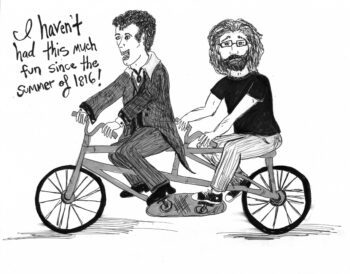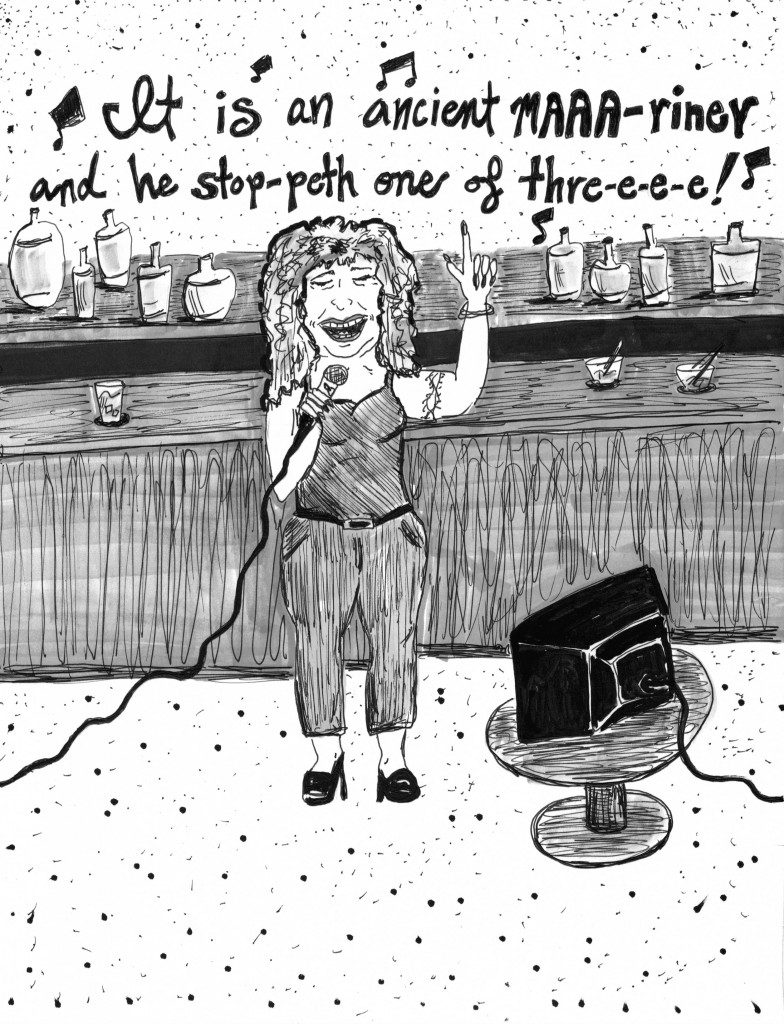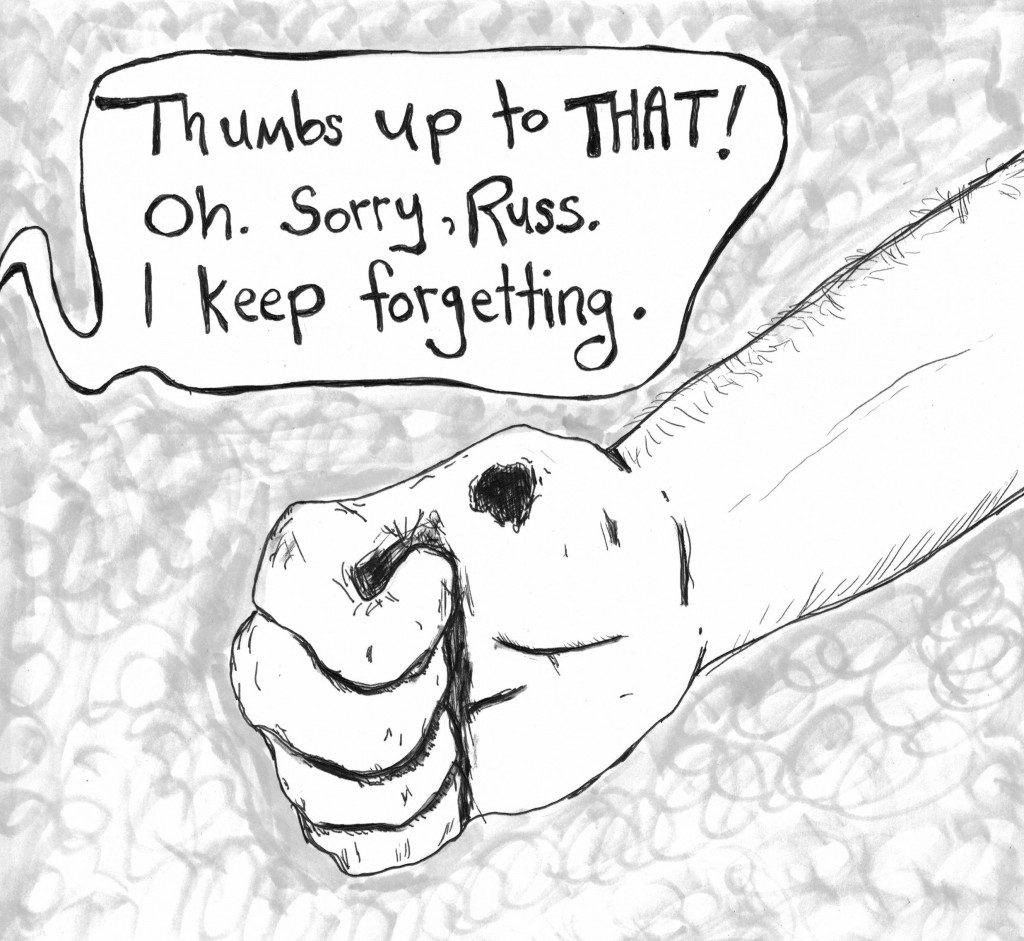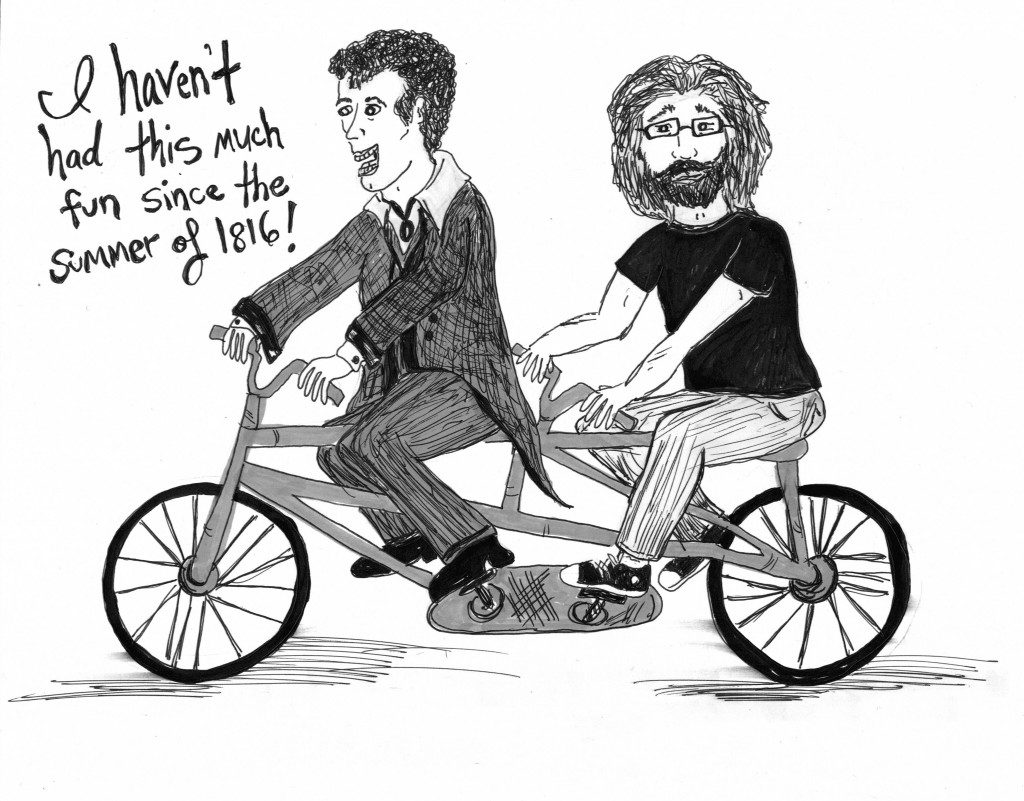
Russ Kick collects information the way people on A&E collect stray cats.
He is an anthologist and writer for The Disinformation Company, an independent media outlet that compiles both weird trivia and the chilling realities of government and war that are happening in the world, while the rest of us are YouTube-ing videos of dogs saying “I love you.” He is also the editor of The Graphic Canon, a three-volume compendium of illustrated interpretations of classic stories. Volume 2 just came out, which covers Kubla Khan and the Brontë sisters, to The Picture of Dorian Gray, making it a definite must-have for both literature and comics nerds.
I had the pleasure of asking Russ some questions about The Graphic Canon and his life as an information hoarder. Here is what he had to say.
Russ Kick: I was trying to find a new direction for my writing and anthologizing, and I figured it might have something to do with my lifelong love of literature and of art, including comics, illustration, graphic design, and other red-headed stepchildren. I was in the graphic novel section of a bookstore at some point in 2008, and I saw a full-length adaptation of The Trial by Kafka. I already owned several adaptations of plays by Shakespeare, The Odyssey, and some others. My anthologist instincts kicked in. I was picturing the humongous, doorstop-sized anthologies of literature from Norton. We needed something that huge, with that epic sweep, with the twist being that all the literature is graphically adapted.
The timing is perfect. There’s a tsunami of amazing material coming out from comics artists and illustrators—we’re really in a golden age, and I can’t even keep up with it all. I figured it was high time to turn artists loose with the greatest works ever written, give them free reign to visually approach the works any way they want, and see what would happen.
It’s not a new concept, of course. There’s a long tradition of visual artists and performing artists using literary classics as the basis for their work. And when it comes to comics, there was the famous Classic Illustrated line that had its heyday in the 1940s and 1950s. But those comics were basically blah. The artwork was competent but generally not fantastic. It was a pretty workman-like transcription of the book’s highlights into panels. With the Canon, I wanted the artists to put their own stamp on the works, really collaborate with the (mostly dead) writers to create something new. And I wanted to include not only novels and plays but a lot of poems, as well as the occasional folk tale, letter, speech, scientific work, etc.
Rumpus: In putting together The Graphic Canon, have you personally been introduced to any classics you didn’t already know?
Kick: There were a bunch where I just knew the basics until I started really researching the book—the ancient Incan play Apu Allontay, “The Mortal Immortal” by Mary Shelley, Mother by Maxim Gorky. Somehow I had completely missed “Jenny Kiss’d Me” by the minor Romantic poet Leigh Hunt until I was looking for poems for the Canon, even though it’s somewhat widely anthologized. I had never read any Saki—who satirized upper-crust society in Edwardian Britain—until Sonia Leong said she wanted to do a manga version of his first story, “Reginald.” A couple of artists in Volume 3 picked lesser-known works from writers who are household names—H.G. Wells’s “The New Accelerator,” which is kind of like a Philip K. Dick story half a century before Philip K. Dick; and John Barleycorn, which is Jack London’s autobiography told through the lens of his overfondness for alcohol (he started drinking beer when he was five).
Rumpus: How did artists choose the work they illustrated with so few overlaps? Basically, how did you keep Volume 2 from becoming a karaoke party where everyone wants to sing the same Kelly Clarkson song?
Kick: Sometimes I did have to tell someone their choice was already taken, but that didn’t happen as much as it might seem. Sometimes I suggested a possible work or two based on an artist’s style and obvious interests. Mostly, though, the artists would get my wishlist of works I thought would make for great adaptations. Some would choose from that, and I’d remove their choices when I sent the list out from then on. A lot of artists would name two to four works they’d like to tackle —some from the wishlist, some not—and I would tell them which ones were unclaimed. No one ended up having to sing a Miley Cyrus song.
Rumpus: There are set to be three volumes of The Graphic Canon, which makes for roughly 180 different authors and stories. How do you edit so much information without your brain exploding?
Kick: I originally signed up with Seven Stories for a single volume. It was going to be big—400 oversized pages—but still, a single book. But when I kept signing up more and more enthusiastic artists (seventy-five percent of The Graphic Canon is original material) and finding fantastic, often obscure work to reprint, they expanded it to a three-volume set, 500-plus pages each. The first one starts with Gilgamesh and goes to the end of the 1700s. The second volume is completely the 1800s. The third volume will be the 20th century from beginning to end.
Basically, with these giant anthologies, I try not to think about what I’m getting into on the front end. If I really thought about how huge and complex and mega-multi-tasky it would become, I might not do it. So I just send out the first invitation to the first potential contributor, keep putting one foot in front of the other, and much later look back and wonder how in god’s name I pulled all that together.
Rumpus: A lot of classics meant for children are usually pretty horrifying, for example: Hans Christian Andersen, the Brothers Grimm, or Der Struwwelpeter. Which fate would you least want to meet?
Kick: Getting your thumbs chopped off—à la Struwwelpeter—probably tops the list. Freezing to death on the streets on New Year’s Eve is up there, too. (That said, Hans Christian Andersen’s unbelievably morose “Little Match Girl” is a demented literary masterpiece.)
Rumpus: If you could go on a platonic Craigslist date with any of the authors in The Graphic Canon, who do you choose and what would you do? (Note: It must include riding a bicycle built for two.)
Kick: Well, I’m not sure what’s really going on in the platonic section of Craigslist, but assuming it does mean just being friends, hanging out with new bros, etc….
It feels like I should choose some towering intellect like Voltaire or George Eliot so that I could pick his or her brain, blah blah blah. But really, I have to say the king of all literary wildmen, Lord Byron. We could hang out in luxurious villas surrounded by his pet bears and eagles, go on nature treks in the most beautiful spots in Europe, and do some world-class cruising for girls (this last would be done mainly on the aforementioned bicycle built for two).
If your question had said non-platonic, I would have to say Edna St. Vincent Millay. I would gladly have let her have her way with me, callously toss me aside, and write a delicious, gloating poem about how she treated me.
Rumpus: Many of the other books you are responsible for are compendiums of weird facts for The Disinformation Company. Can you give me a top-five list of the most unbelievable things you have learned as a knowledge hoarder?
Kick: My mind is reeling. So many wild and crazy facts. Finding out that around one in ten people weren’t fathered by the man they think is their dad was pretty eye-opening (and that’s just an average—it can be much lower or much higher in various regions, countries, etc.). The fact that fetuses masturbate is well-known among ob-gyns, but pretty surprising to the rest of us. On a much more serious note, a colleague of mine dug up military documents from the late 1990s, showing that U.S. military labs were working on biological weapons in direct violation of international treaties and federal laws. A reporter from The New York Times was very eager to do a story on this, but his higher-ups suddenly told him to stop working on it, with no explanation, so I ran an article about it—with reproductions of the documents—in the third anthology I did for Disinfo, Abuse Your Illusions.
I’ve always been intrigued by all the holes, contradictions, and impossibilities in the official story of the Columbine High School massacre. Among other things, police and F.B.I. documents show that a lot of students saw a third person take part in the attack, all of them describing him exactly the same way when they were interviewed on the very day of the massacre, and on the following day.
One of my favorite articles I ever ran was from Sydney Schanberg, who won the Pulitzer for his reporting from Cambodia, which was depicted in the movie, The Killing Fields. He presents fact after fact showing that POWs were indeed knowingly left behind in Vietnam, despite the assurances of every president since Nixon that they were all brought home.
It’s kind of mind-blowing when you realize that the list of religious rules that everyone calls “The Ten Commandments” isn’t really the Ten Commandments. It’s a little complicated, but basically the list we always see (worshipping idols, honoring parents, bearing false witness, coveting, etc.) is actually from earlier in Exodus when God is speaking to Moses in front of a crowd of Israelites. If you simply read on, to the part where Moses goes up the mountain to get the famous stone tablets etched with the Ten Commandments, you see that those rules are different…and some are really, really weird. The actual Tenth Commandment, for example, runs as follows: “Thou shalt not seethe a kid [i.e., a young goat] in his mother’s milk.” I think we can all keep that one, no problem.
I also like the fact that, in the Sermon on the Mount, Jesus told his followers that if someone asks you for something of yours, you must give it to them. Period. No qualifications, no exceptions. That little tidbit rarely gets quoted. Elsewhere (Luke 14:13, to be exact), he commanded that whenever people host a dinner party, they must invite the poor and the disabled. I’d love to see the Romneys and the Bushes following these commands from their Lord…
Well, I could go on and on, but those are some of the facts that spring to mind immediately.
***
Original Rumpus artwork by Cassie J. Sneider.








